
Exhibition photographic oeuvre of world traveller Alexine Tinne
In collaboration with the The Hague Historical Museum and photographer Dagmar van Weeghel, Leiden University Libraries (UBL) is the first to present a retrospective exhibition of the photographic oeuvre of Alexine Tinne (1835 – 1869). New research into her life and work is the reason for a reappraisal of this idiosyncratic 'The Hague lady'.
In the nineteenth century, Tinne was not only world-famous for her fearless travels, but she also was one of the most important pioneers from the early days of photography in the Netherlands. The exhibition shows photos that she took herself, that she was in, and that she had in her possession. Her nineteenth-century photographs enter a dialogue with the work of contemporary photographer Dagmar van Weeghel. Maartje van den Heuvel, curator of Photography at the UBL, is guest curator of the exhibition Alexine Tinne, photographer - Her worldview. The exhibition can be viewed in the Hague Historical Museum from 11 December 2021 to 12 June 2022.

The urge to experiment
Alexine immersed herself in the photographic process, something that was quite exceptional for a woman at the time. She achieved remarkable results and ordered professional cameras, including one of an unusually large format for the Netherlands, with glass negatives of almost 40 x 50 cm. She also mastered the complicated and demanding technique of wet collodion printing, made exceptional interior photos and collages, and practised with a carriage as a moving darkroom. Because of her urge to experiment, several photographic firsts for the Netherlands can be attributed to her in various genres. In her urban photography, she displays a modern view. While travelling, she took idiosyncratic personal portrait photos of her travel group – often in collaboration with local photo studios – photos that we would now call 'inclusive', deviating from the then prevailing Orientalist image. Alexine Tinne is rightfully the first female photographer of importance in Dutch photography.
The exhibition makes new connections with well-known names from the history of photography, such as the British photographer Francis Frith (1822-1898), whom she met while passing through Egypt. It is even likely that Alexine took pictures with Frith's camera. In addition, she can most likely be seen in two photos Frith took of temples in Egypt. Back in The Hague, she appears to have conducted photographic experiments with English photographer Robert J. Bingham, of whom newly discovered material is shown in the exhibition.
-
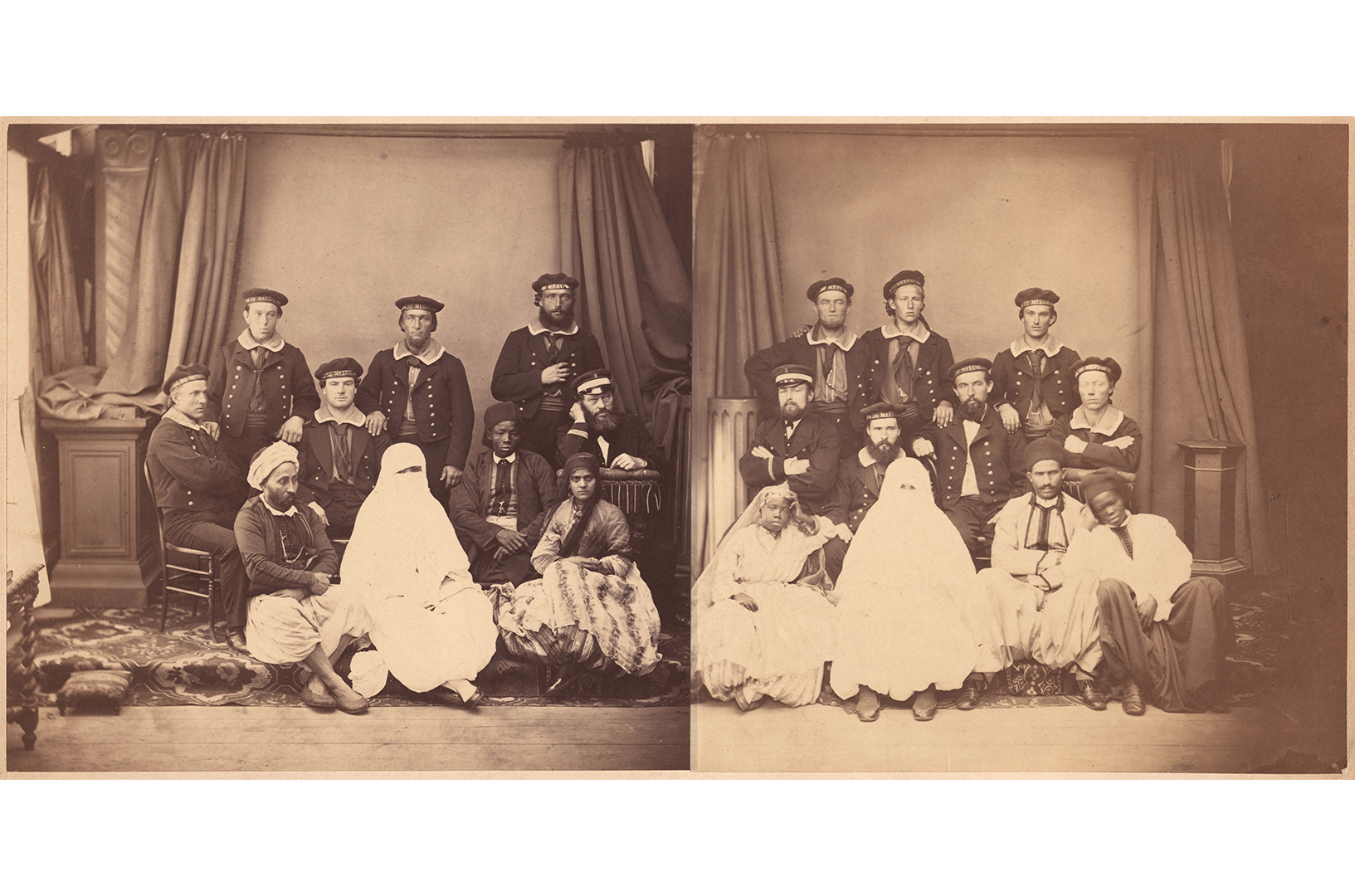
Group portrait of 21 men and women from Alexine Tinne's travel group, Algiers, 1865, collection The Hague Municipal Archives. -
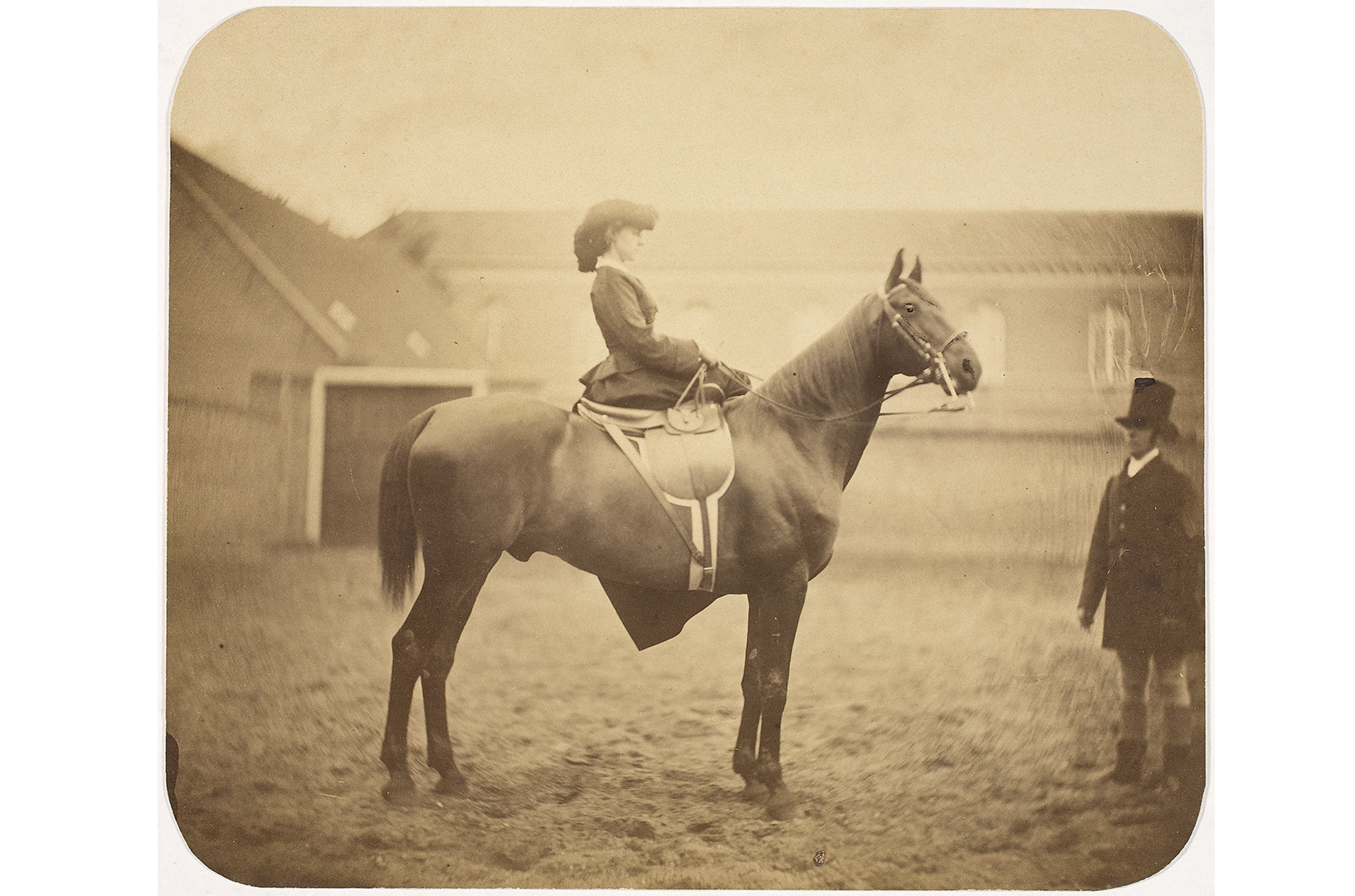
Alexine Tinne on horseback in the The Hague Riding School, photographer Maurits Verveer, collection Rijksmuseum, National Archives and Royal Collections. -
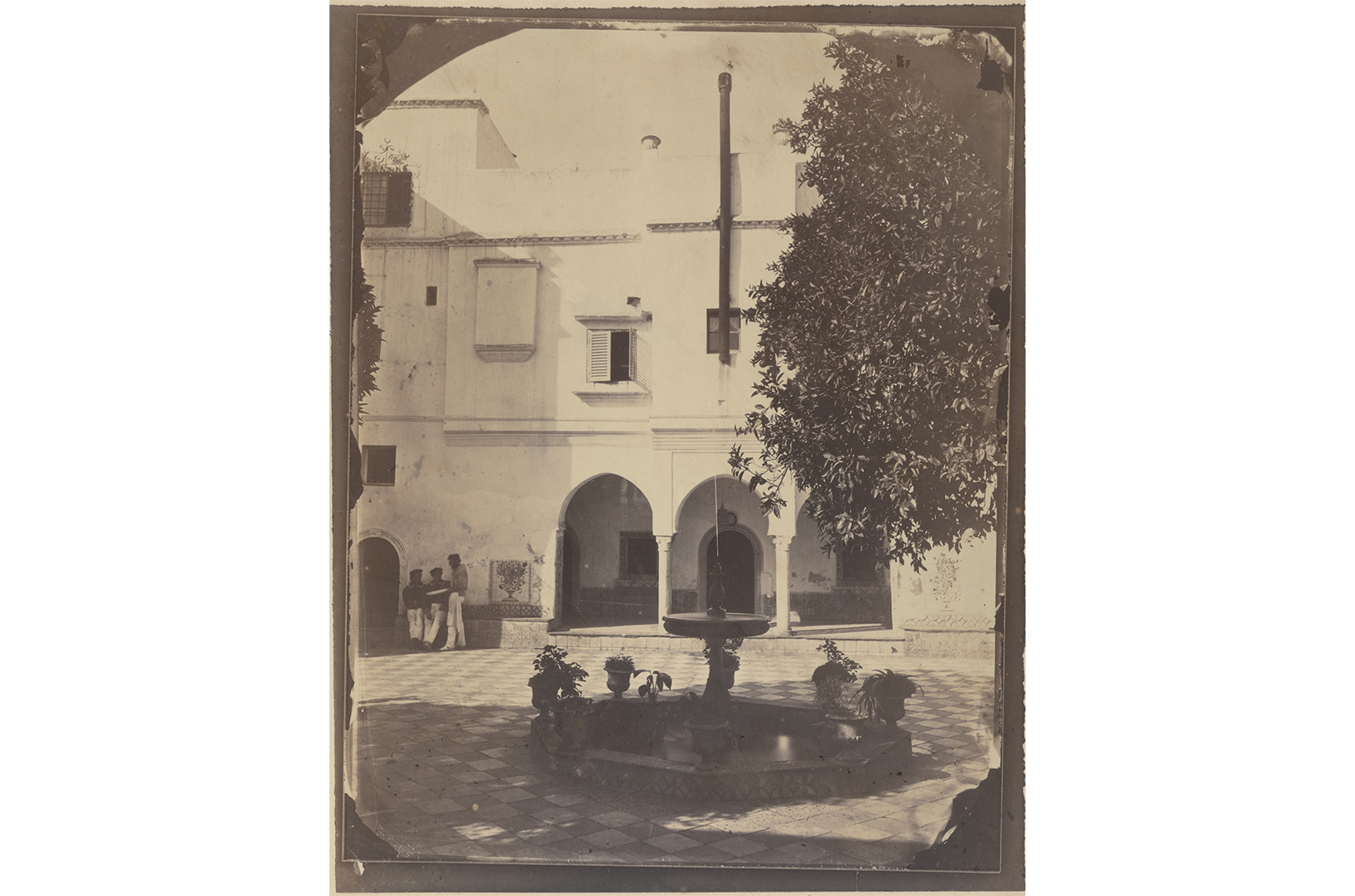
House in Algiers, photographer Alexine Tinne, collections The Hague Historical Museum. -
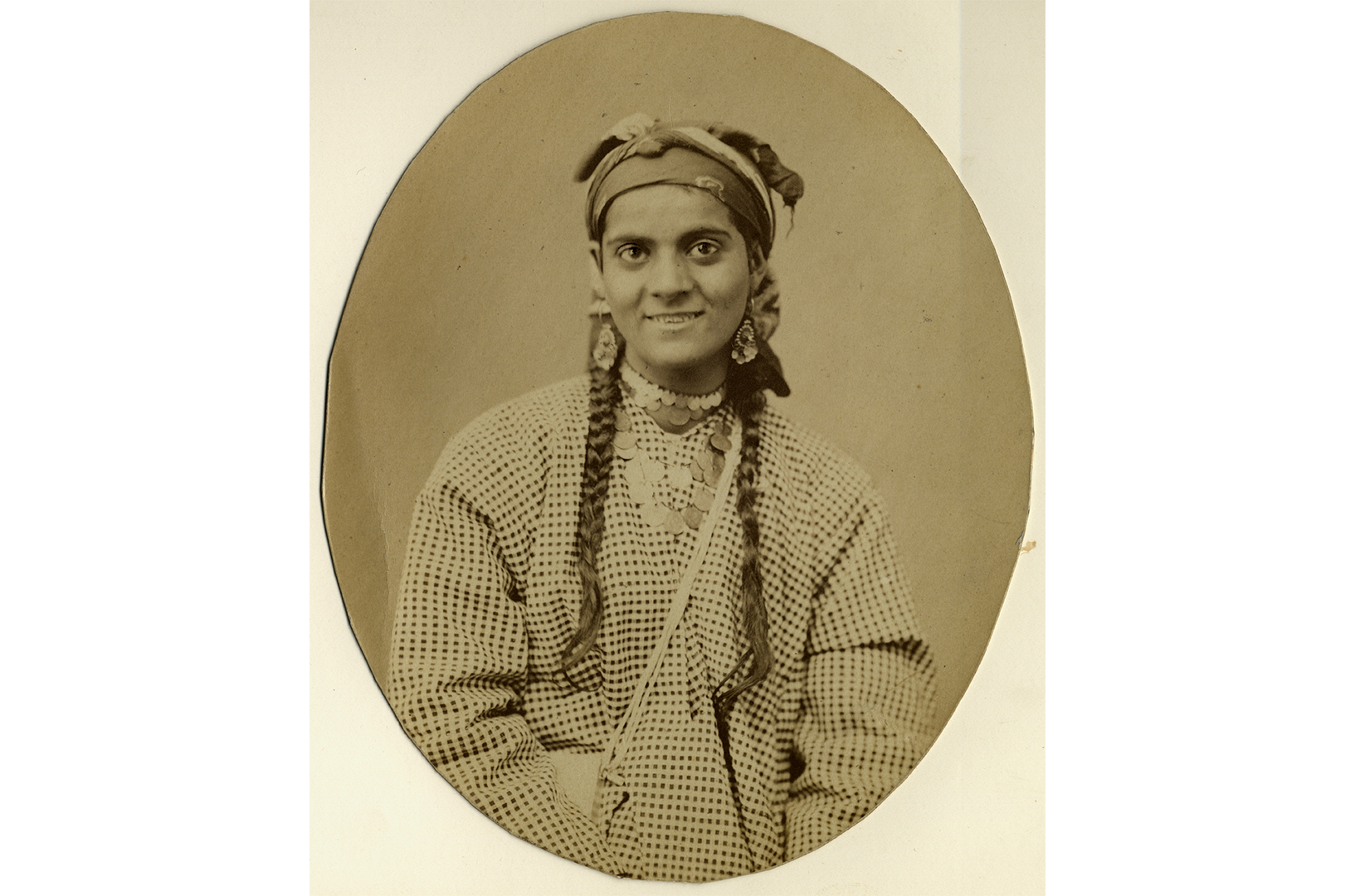
Habiba, member of Alexine Tinne’s travel company, Naples 1865, collections The Hague Municipal Archives. -
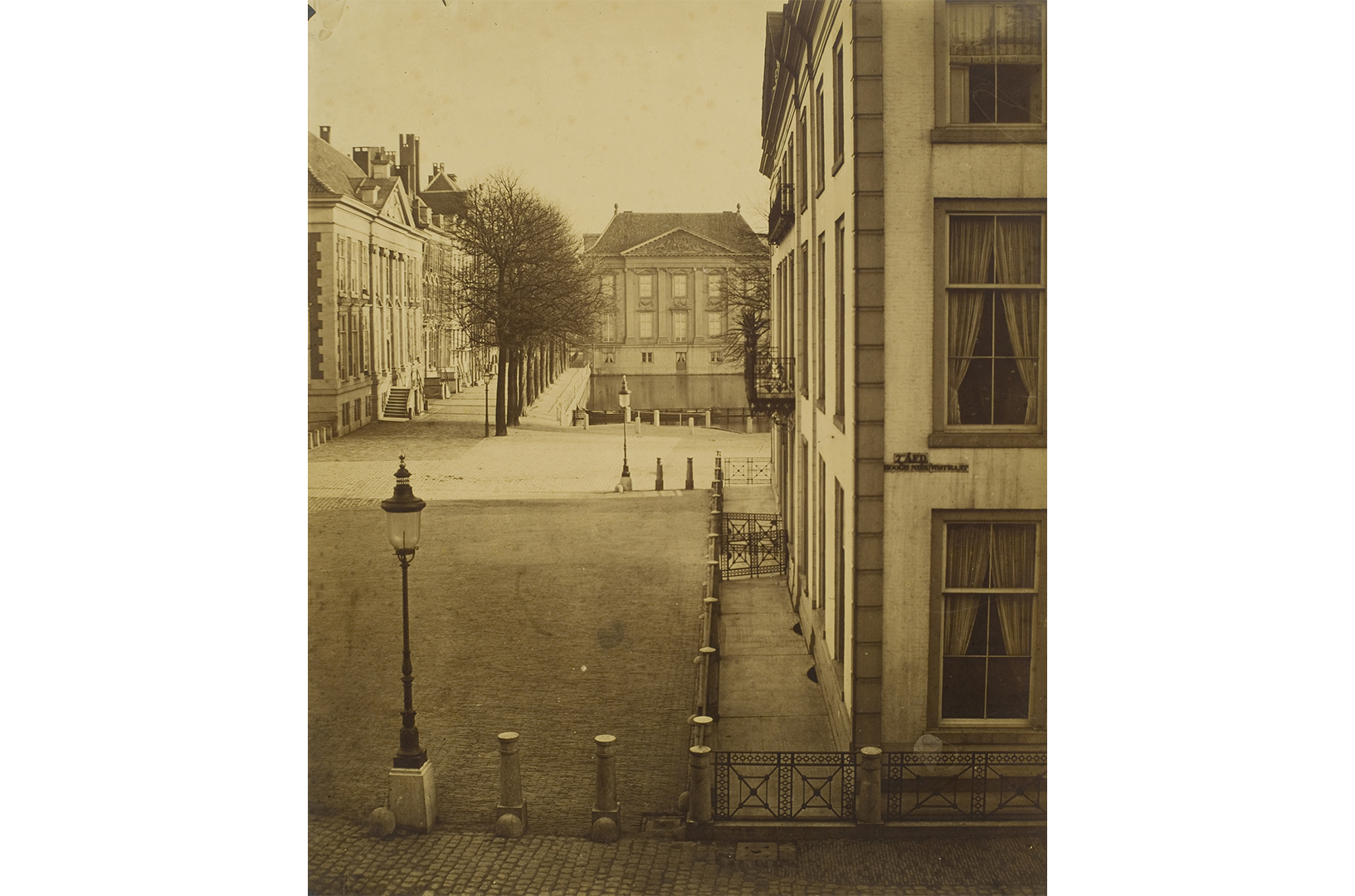
View of the Tournooiveld from the Hoge Nieuwstraat to the Korte Vijverberg, photographer Alexine Tinne, collections The Hague Municipal Archives. -
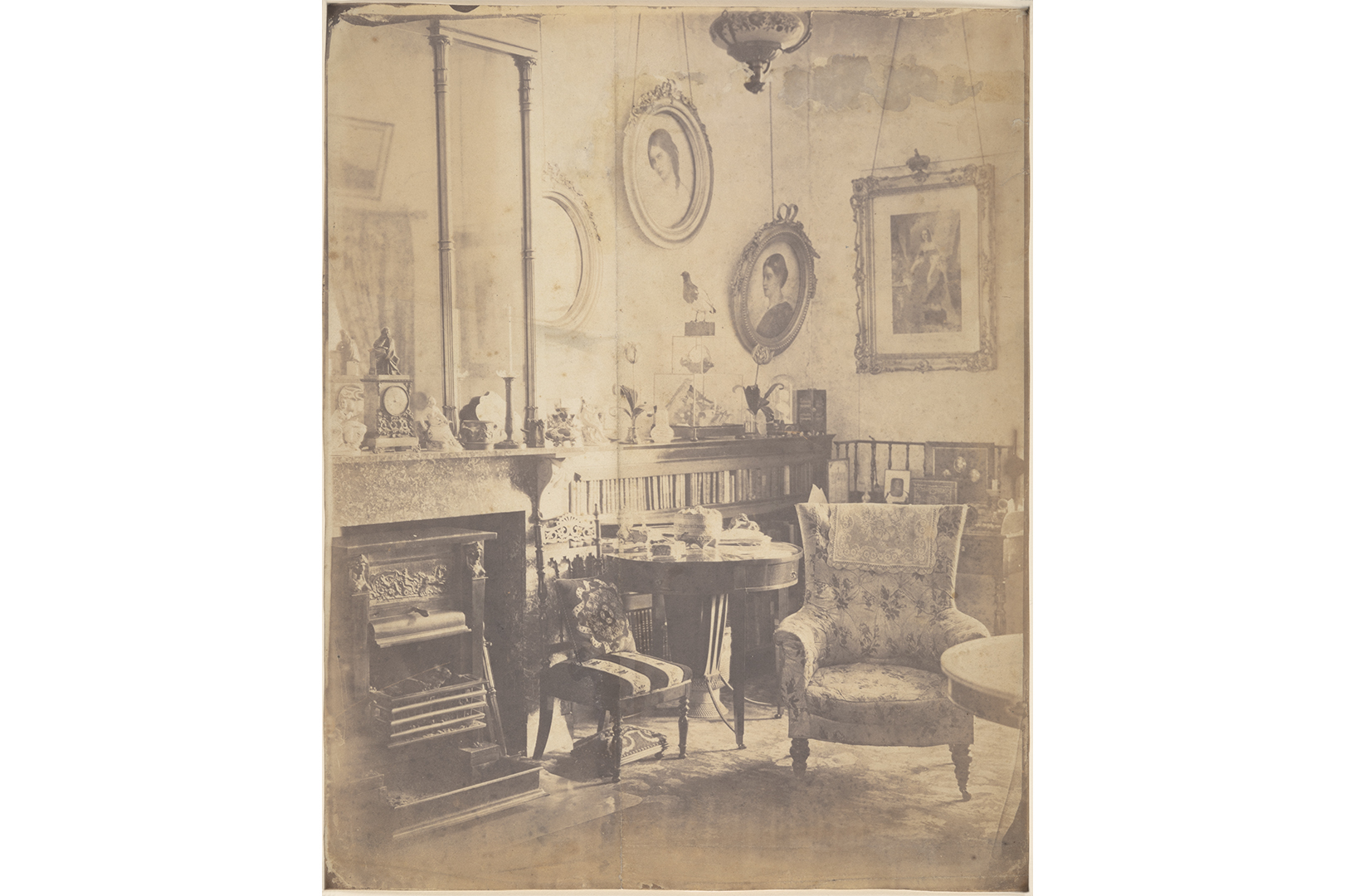
Living room Lange Voorhout 32, photographer Alexine Tinne, collections The Hague Historical Museum.
Original Prints and Negatives
Nineteenth-century photography is extremely fragile, which is why many of the original prints and negatives can be seen in modified light and special darkrooms. Moreover, the original photos will in large part be exchanged with other specimens at the beginning of March. This has the additional effect that on a second visit after March 11, the enthusiast can see a largely new exhibition. To understand Tinne's oeuvre better, several vulnerable objects are shown in reproduced form. To show her inclusive view and to allow the photos to enter into a dialogue with contemporary portraits, four photos have been scanned, digitally restored and printed as high-quality exhibition print.
Through selections of travel photography, but also maps and special travel albums illustrated with prints from the famous photo collection of the UBL, the world of Alexine's Middle Eastern and North African travel destinations is made visible. Alexine visited several photo studios in Africa where she took portraits of her colourful travel group with local photographers. A comparison with more oriental coloured scientific and tourist photo portraits shows how different and 'inclusive' Alexine Tinne's worldview was.
Series 'Nader tot Tinne'
A link to the present and the relevance that Tinne's work still has today is made clear by the combination in the exhibition with two series of portraits, made by photographer Dagmar van Weeghel (1974) – who is also the initiator of this exhibition. She became fascinated by Tinne's person and legacy. In her series Nader tot Tinne, Van Weeghel brings the historical figure Tinne to life in staged portraits. With Van Weeghel's series Diaspora – stately portraits of African migrants in Belgium and the Netherlands – a link is drawn to the present. Like Tinne and her company in Africa, the immigrants in Europe are looking for new social connections, beyond the boundaries of cultural differences. It is still a statement today, just as in the nineteenth century, to portray people of different skin colour and origins on an equal footing.

